Heavy metal musicians are underestimated as visual artists. They create or oversee logo designs, album covers, posters, stage and lighting designs that clearly convey their musical ideas in visual form, whether it’s drippy lettering or morbid imagery or cruising industrial styles. More art galleries should be open to artwork by rock artists, and that’s one good reason to explore “What Lurks on Channel X?” by Rob Zombie.
The exhibition of 18 of Zombie’s paintings, on display at the Morrison Gallery in Kent through Nov. 16, screams loudly from the walls of the large, imposing gallery. This quaint small town in Litchfield County has a population of 3,000 and seems to have at least that many art galleries. The Morrison Gallery has a museum-like stature and calm, which makes Zombie’s art that much more provocative.
All the artworks are reproduced on the Morrison Gallery website, but laid out side by side, as on a screen, it’s impossible to sense their scale or the separate impact each piece might have in person. In the gallery, these works are immense. Some measure 6 feet by 10 feet. They are not framed in glass, which makes them that much more visceral and unrestrained.
This is apparently Zombie’s first visual art exhibition, but he attended the Parsons School of Design in New York City for a year and a half on a scholarship before leaving to follow a music and filmmaking path instead.
That said, Zombie can not be considered an underappreciated multi-disciplinary artist. Besides his eight albums as a solo artist, four with the band White Zombie and oodles of other recordings, Zombie has written and directed and/or produced nearly a dozen feature films, notably “House of 1000 Corpses” and the 2007 “Halloween” reboot. He has also acted in movies and TV, done animation voice-overs and been the subject of documentaries and concert films.
His other achievements are worth recounting when describing his work since most of Zombie’s pieces appear to draw from the same endless interest in pop culture, crime, horror, revolution and other wild extremes of our society. But in another sense, these are solid stand-alone works of art, worthy of the gallery space they occupy. They don’t need Zombie’s celebrity or stature in other fields to sell them.
In notes for this exhibit, Zombie is quoted saying, “I loved painting but school made me hate it. So I stopped but in the past 10 years I rediscovered my love of it once again.” These paintings have a great stylistic unity, having been painted between 2012 and 2020.
Zombie, who grew up in Haverhill, Massachusetts, has lived in Connecticut for decades. This inaugural art exhibit has some local excitement around it. Zombie attended the opening reception, which happened about a week before Halloween.
Unsurprisingly, a Zombie painting is awash in pop culture iconography: Images or texts from movies, comic books, tabloid newspapers. Images in the “What Lurks on Channel X” painting include Frank Zappa, Fonzie from “Happy Days,” Jerry Lewis and Bob Hope as they were drawn for DC Comics in the 1960s, the Saturday morning cartoon versions of The Beatles and a lot of criminals. On one wall there are portraits of The Birdman of Alcatraz, Al Capone and Machine Gun Kelly. A lot of this is plainly stuff that kids of the 1970s and ‘80s were into, but it’s molded into something more socially significant.
You can connect Zombie’s work to any modern art movement you want: Pop art, redrawn found art, the underground cartoon work of Gary Panter or Mark Newgarden, the satirical wartime collages of John Heartfield in the 1910s, the graffiti collages of Jean-Michel Basquiat and so on. Some of the style seems to emerge directly from “Famous Monsters of Filmland” magazine covers from the 1960s. Some of the paintings are carried by the appropriated images that anchor them such as the cover of the first Steve Martin comedy album, mugshots of famous gangsters, Lon Chaney as the Phantom of the Opera.
One piece, “Metal Machine Music” has a title that’s the same as an infamous Lou Reed composition of feedback noise. In a single canvas it references the band Devo, Mexican movie star/wrestler Santo, “Hogan’s Heroes,” “Shazam!,” Lee Van Cleef, the Tony Curtis movie “Houdini,” a skull with “FTW” emblazoned on it, Veronica Lodge from “Archie” comics with the Manson Family-friendly phrase “political piggy” scrawled on her body and much more.
Yet as dependent as they are on familiar faces and phrases, even Zombie’s signature is in colorful outlined block capitals that take up a lot of room on the canvas.
“The Seven Words You Can’t Say on Television,” on display at the Morrison Gallery as both a 72-inch by 108-inch painting and a smaller 24×36 inch heavyweight archival print, isn’t just a tribute to George Carlin’s culture-shifting comedy routine, it’s a beautiful artistic vision of it, with the seven gigantic swear words pushing a wary-looking Carlin off to the sidelines of the artwork. As with nearly all the work on display here, “The Seven Words You Can’t Say on Television” is embellished cryptic phrases: “I’ve seen the saucers,” “Six dollars a head,” “Cultural space debris orbiting in smeary ellipses,” “reduced to a mere robot by society,” etc.
This is art with overt written-out messages, brash and brilliantly colored. They smack you upside the head as soon as you look at them. You’d want to hear the music Rob Zombie would create if these artworks were his album covers, but the art is enough.
“What Lurks on Channel X: Paintings by Rob Zombie” is on view through Nov. 16 at the Morrison Gallery, 60 North Main St., Kent. morrisongallery.com.

 860-261-4405
860-261-4405




 Service Areas
Service Areas























